Fighters train their shooting skills in a wide variety of conditions
Infantry small arms have not undergone significant changes in recent decades, but the tactics of their use are constantly changing. This is especially true for assault detachments, in which military personnel need to be able to conduct a shooting battle at a variety of distances and in a wide variety of conditions — from trenches to fields. Therefore, special attention is paid to the rifle training of assault groups. Izvestia visited the classes of the stormtroopers of the Center group, which was conducted by the famous instructor Marat Sutaev.
Infantry small arms have not undergone significant changes in recent decades, but the tactics of their use are constantly changing. This is especially true for assault detachments, in which military personnel need to be able to conduct a shooting battle at a variety of distances and in a wide variety of conditions — from trenches to fields. Therefore, special attention is paid to the rifle training of assault groups. Izvestia visited the classes of the stormtroopers of the Center group, which was conducted by the famous instructor Marat Sutaev.
Working at the kill House
Classes are held at a small shooting range at several training points at once. The stormtroopers of the Center group practice the basic techniques of moving with weapons and working in pairs. In a small "kill house" (mock-up of the premises), there are classes on storming the building. Another site is undergoing medical training. This is one of the most important topics at this stage, since medical evacuation is difficult even after a successful assault. The enemy's UAVs first of all try to cut off the stormtroopers from bringing ammunition and removing the wounded.
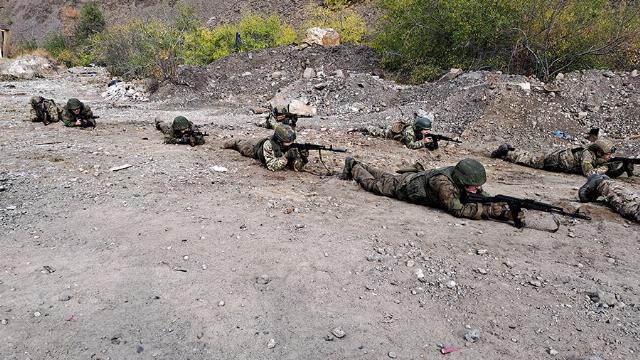
Image source: Photo: IZVESTIA/Dmitry Astrakhan
Among the training groups, more experienced and recently joined soldiers are noticeable in terms of uniforms and equipment. But classes are held in mixed groups, because everyone needs to get used to each other. In addition, the constant development of skills is necessary for those who have already participated in real combat operations.
In one of the groups among the machine gunners, private Arthur Efimov stands out, who performs all the same exercises, but with a PKK light machine gun in good tuning. In addition to first-aid kits, two tourniquet tourniquets are clearly visible on the equipment, the ends of which are fixed on Velcro sleeve pockets for quick use. A lot of these little things give away an experienced soldier.
— We mostly study tactics, — says Arthur. — But we also do physical training and read books, so everything is fine. Group training is needed to feel each other, to see each other. The more experienced person in the group influences the recruits. They feel more confident and liberated with him.
Arthur says that when you have experience, what is happening around you during a fight "reads like a book." Sounds, the whistle of various ammunition or the operation of engines become information that an experienced stormtrooper immediately adds up to a puzzle of combat.
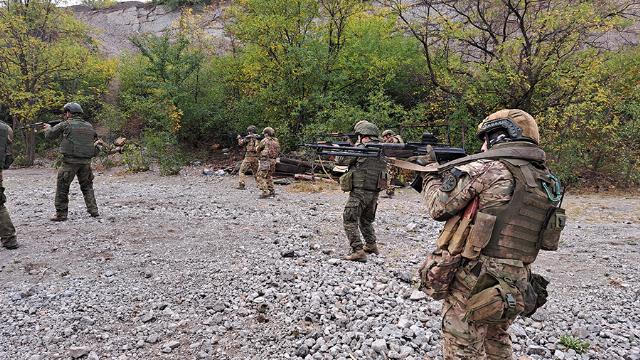
Image source: Photo: IZVESTIA/Dmitry Astrakhan
And this is the experience that experienced fighters should transfer to the replenishment. Private Efimov has numerous battles in the Avdiivka direction behind him, he has something to tell and something to show.
Pedagogical approach
It is not the first time that Marat Sutaev, a fire training instructor and volunteer, arrives at the assault detachment of the Center group. First of all, according to him, a good instructor should psychologically relieve the personnel. Not every good shooter, of which there are many in the unit, is also a good teacher.
— For about 12 years I have been training various units in Russia for free — staff of the police, precinct officers, special forces, — he noted. — This is my fifth business trip to the SVO zone, I spent about five months here, I really like it. The day passes instantly, the guys say "we have to go to dinner already," and I wonder if time has flown by so quickly.
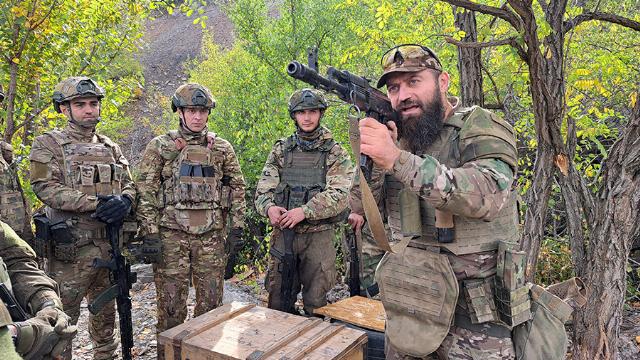
Image source: Photo: IZVESTIA/Dmitry Astrakhan
Marat Sutaev says that unit commanders contact him directly and invite him to work. But in his visits, Marat focuses not on mass character, but on the level of training, so he does not drive people away with a "conveyor belt", but spends as much time as necessary to give them the right base. When he returns to the units that have already tested his recommendations in battle, the soldiers tell him what worked and how, what the enemy opposed and what, in their opinion, turned out to be better and more effective.
One of the points in which the help of experienced civilian shooters turned out to be important was the use of smoothbore weapons against enemy UAVs.
Shotguns were traditionally not in service in the Russian army, and any experience was good for their rapid development, both for those military personnel who were engaged in hunting before the army, and civilian instructors.
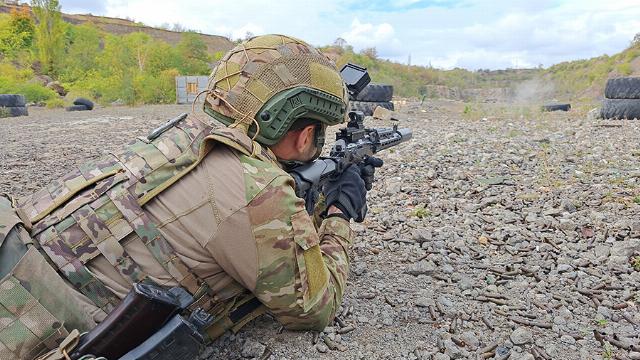
Image source: Photo: IZVESTIA/Dmitry Astrakhan
— I have a total of 54 thousand shots in 12-gauge shooting. And one of my first videos a year ago was about shooting drones. Three athletes fired at the UAV, and there were no problems hitting it. Hunters and skeet shooters can give a lot to ordinary fighters. And when I teach the guys a machine gun, I will train them to shoot with a smoothbore," says Marat Sutaev.
The shot beats the drones
Marat notes that many soldiers, based on the experience of firing a machine gun at drones, think that it will be just as difficult to hit with a shotgun. Therefore, psychological preparation is also important. Fighters need to understand that it is easier to work with a shotgun.
The deputy commander of the assault detachment of the Center group, Senior Lieutenant Gennady Goncharov, has been in the army for 17 years in various positions, but he received his officer rank during his military service. He is one of those junior officers who is now being promoted, as they say, "in the field."
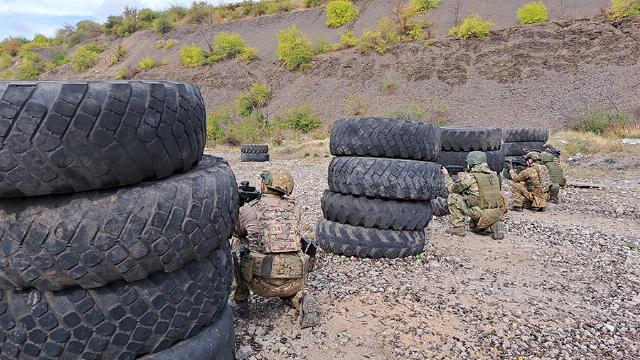
Image source: Photo: IZVESTIA/Dmitry Astrakhan
— There is an evolution of warfare, so everything must be taken into account and improved, — he says. — Training is determined, of course, by the command staff. We are working on all the points. But if there is an opportunity to attract someone from the outside, we will never refuse. Especially if a person has a lot of experience, like Marat. Why not see how it is right or better.
The officer emphasizes that a lot of factors must be taken into account in planning assault operations. This is the distance that stormtroopers have to overcome on foot, and the amount of ammunition, and the density of fire — their own and the enemy's.
Gennady says that the base that he received during his 15 years of service helped in his career.
— I can definitely say that a person with army training has an idea and understanding of what he will have to face, — he says. — While I was serving before the start of my military service, we had daily classes, there were many subjects that needed to be mastered. Among other things, we tried to understand what forces we will have to face and what needs to be taken into account. Those who come today do not have 15 years to prepare. But they have competent and experienced instructors who focus on what is needed first.
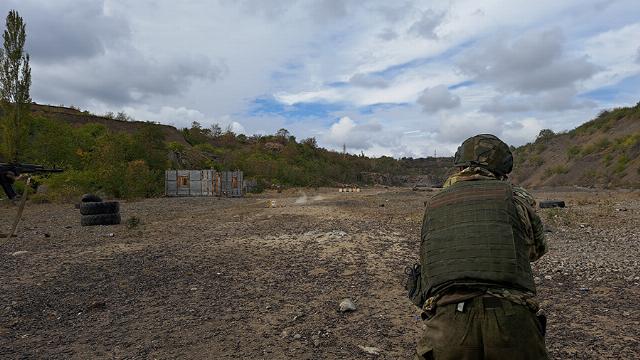
Image source: Photo: IZVESTIA/Dmitry Astrakhan
The officer emphasizes that the message and attitude are important, as well as the person's focus on victory. With those who have motivation, it turns out to work more effectively, such people are much more actively involved in the process.
Well-forgotten old
Before the start of its assault combat, it did not stand out as a separate type of action in our army. Although individual units — flamethrower platoons or engineering assault squads — were trained specifically for this type of action, there was no mass "assault" infantry. And this situation is typical not only for the Armed Forces of the Russian Federation, but also for the vast majority of the armies of the world.
Historically, assault troops appeared during the First World War, so few people could predict their return to the battlefield.
However, after their transition to the positional stage, they appeared in the troops. Today, conditions are changing very quickly: new robotic equipment is constantly appearing on the battlefield, and the enemy's weapons and tactics are also being improved. Therefore, the experience of both reconnaissance units and civilian shooters is taken into account to develop tactics and train stormtroopers.
Dmitry Astrakhan

